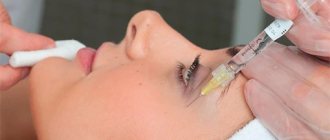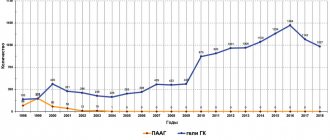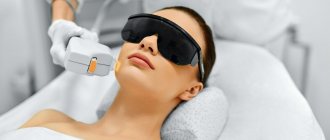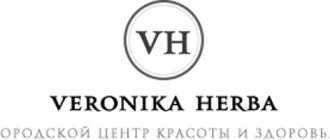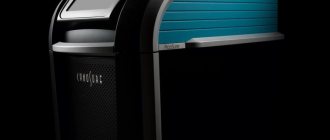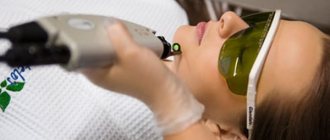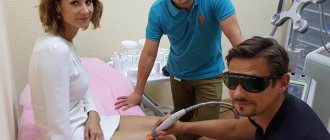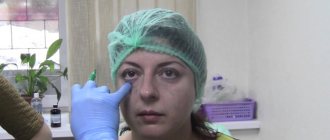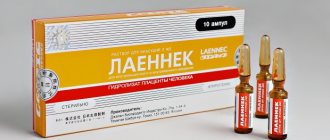09.29.2017 / Hardware procedures, Salon procedures
A laser is a powerful light source. It has extraordinary performance and is capable of traveling long distances with little divergence. Laser cosmetology emerged based on the unique properties of the laser beam. The direction is distinguished by the ability to penetrate hard-to-reach areas of the body, control the process of blood circulation, select the most suitable method of influence, adjusting the parameters of the device to the characteristics of the patient’s body. The opportunity to get beautiful skin without cuts or punctures attracts many people. Therefore, rejuvenation and other services that involve manipulation of a high-energy beam are preferred to plastic surgery and “beauty injections.”
Types of lasers
To achieve healing and corrective effects, different types of cosmetic lasers are used - it is advisable to immediately ask the cosmetologist what kind of installation is used in the office. All types are united by the absence of consequences in the form of scars, which often occur after interventions by aesthetic surgeons.
There are such types of laser
:
1. Erbium
. Penetrates shallowly and eliminates defects with maximum precision. The generated thermal energy is quickly dissipated, so that nearby tissues are not damaged. Short, frequent pulses, combined with the length of the emitted wave and its energy density, must be balanced. Only then can side effects from the procedure be excluded. Using an erbium laser, stretch marks are effectively eliminated, tightening is performed, and peeling is performed.
2. Carbon dioxide
. It has been used in cosmetology and medicine for almost 40 years. Indications for resurfacing with this particular type of beam are pigment spots on the face and body, removal of tattoos, poor-quality permanent makeup, removal of scars after operations, injuries, and attempts to eliminate acne on your own.
Carbon dioxide laser (the second name of the device) is used to perform dermabrasion - a fairly serious cosmetic procedure. If you mishandle the device or thoughtlessly configure options, it leads to irreversible consequences. The device allows you to direct a high-energy beam in a dosed manner, regulate, and then control the depth of penetration. In one session, the cosmetologist treats a large area of skin. Direct indications for the use of carbon dioxide laser are the need to remove papillomas, colloidal scars, and the consequences of acne. The patient will be able to normalize the condition of the skin if it was previously problematic. The cosmetologist will eliminate enlarged pores and make the surface of the epithelium smooth. The advantage of the procedure is a low number of relapses and side effects, a short recovery period. Disadvantages – redness in the treatment area lasts for a long time (up to 2 months). The phenomenon is associated with the expansion of capillaries - small blood vessels undergo increased stress during the procedure. Incorrect dosage of the laser beam leads to scarring, weakening, or vice versa – an increase in pigmentation.
3. Ruby
. Hair removal is carried out with this beam. Feature – the procedure can only be performed on light skin. By acting on a tanned or naturally dark-skinned skin, you can provoke problems with pigmentation, and with even more serious aggravation, a burn will occur.
4. Alexandrite
. Generates a long-range beam, which distinguishes it from its ruby counterpart. Treatment requires constant external cooling of tissues. Apply to light skin, provided there is no tan. Performing hair removal on a person with blond hair is ineffective and even harmful.
5. Diode
. This type of laser is used to perform one of the most effective types of hair removal. Beam penetration depth is no more than 4 mm. The advantage of the procedure is that there is no damage to the natural pigmentation of the body.
Neodymium laser is also used
. The individual properties of the generated energy flow allow it to be used for various purposes - from eliminating low-quality permanent makeup to hair removal. In addition to affecting the hair follicle and natural skin pigment, the beam affects small blood vessels. Their coagulation occurs. Only specialized clinics are equipped with installations of this type; their presence in standard beauty salons is quite rare.
Laser dermabrasion is:
- low invasiveness of the operations;
- minimal thermal damage and rapid restoration of the skin;
- minimal risk of postoperative relapses and complications;
- rapid wound healing
| Peeling mechanism of action ...based on the skin's ability to quickly regenerate itself. Any traumatic impact - a burn, abrasion, cut - causes an immediate reaction from the body. At the slightest injury, all forces are thrown into defense - the regeneration process begins. However, when restoring the skin, old materials are not used. The fact is that during injury, deformed cells are destroyed, and the activity of young and healthy people is encouraged more than ever. Of course, in addition to regeneration, other renewal processes continuously occur in the skin. This, for example, is the program of activity of keratinocytes - the main cells of the epidermis. Essentially, the epidermis consists of layers of keratinocytes of different ages. And each layer performs its own physiological task (for example, the uppermost stratum corneum is a dense protective barrier of dead cells). Over the years, disruptions may begin in the life program of keratinocytes, then the cells, along with accumulated damage, linger in the intermediate layer. The negativity emanating from them (like infectious diseases) inevitably affects the activity of other cells. As a result, cell division in living tissues slows down (they become thinner), and the stratum corneum, on the contrary, thickens, giving the skin a parchment-like appearance. |
Induced skin exfoliation as artificial damage to the epidermis is carried out using selectively gentle methods, without pain or discomfort.
If regeneration occurs normally, then the skin looks much better after rehabilitation. The stratum corneum becomes thinner and more uniform, and the dermis becomes elastic.
The CO
2 laser
has found wide application in dermabrasion due to the strictly dosed depth of penetration into the tissue (from 50 microns) in one pass and good hemostasis (stopping bleeding) at the same time.
The scanning device provides precise layer-by-layer vaporization of the epidermis without thermal damage to the underlying layers of the dermis and ensures uniform laser ablation when treating large areas of skin.
The super-pulse operating mode allows you to remove various epidermal defects without obvious pain.
CO 2 laser “IRRADIA”.
model 315M
Indications for laser treatment
The widespread use of lasers in cosmetology is explained by the diverse range of applications. Contacting a cosmetologist and signing up for a procedure will be useful for people with the following skin problems:
• Acne, consequences after it - scars, blue spots. • Wrinkles – typical facial wrinkles, pronounced age-related. • Scars, regardless of their origin, period of limitation. • Sagging facial contours. • Flabbiness of the skin, decreased tone. • Bags under the eyes. • Hyperpigmentation on the face, body. • Presence of dark circles under the eyes. • Poor quality tattoo. • Enlarged pores.
After treatment, the skin becomes velvety, smooth, soft, and toned. Defects disappear, due to which the face and body acquire a uniform texture. The duration of one procedure depends on the type of laser treatment, the patient’s expectations, the amount of work to be done and the degree of neglect of the existing defect. Sometimes the duration of one session is determined by the statute of limitations of the skin problem.
A good effect is achieved by the combined use of CO 2 and erbium lasers.
CO 2 laser has a penetrating effect with significant (compared to erbium laser) thermal damage and allows you to smooth out deep and fine wrinkles.
The erbium laser has a superficial effect: precise ablation, a small coagulation zone and a very small heating zone. Effective for eliminating superficial wrinkles, smoothes out irregularities after CO 2 laser treatment.
Using these two technologies, the doctor has the opportunity in each specific case to choose the optimal combination between tissue evaporation (ablation) and thermal effects to achieve the desired result in skin rejuvenation and collagen renewal, thereby creating a radical and long-lasting cosmetic effect.
Laser tattoo removal
In recent years, the method of laser tattoo removal has made significant progress. During this time, a huge amount of clinical material was obtained, and laser methods became the most advanced, if not the only acceptable methods for removing tattoos from the point of view of the cosmetic result obtained.
To destroy the dyes that make up the basis of the tattoo, the laser must emit light that is absorbed by the given dye.
For this purpose, a special “Q-switched” laser operating mode is used, which makes it possible to achieve high power laser pulses by shortening their duration. To output radiation in such lasers, an articulated mirror light guide is used, which makes it possible to deliver laser radiation to the doctor’s working instrument.
Tattoo dye granules selectively absorb laser radiation, break into small fragments and are gradually eliminated through the lymphatic system.
Compared to other methods, laser tattoo removal is a safer method because the laser radiation only affects the ink and not the surrounding skin.
The laser allows you to remove tattoos without scars. To completely remove most tattoos and dermal pigmentation, 2 to 5 sessions are required. Removing large tattoos may require more than 10 sessions.
The number of sessions depends on several factors, such as the age of the tattoo, its size and location, depth, type and color of pigment. Green and yellow tattoos are difficult to remove. Typically, professionally performed tattoos require more sessions to remove them than amateur tattoos. There are such persistent types of dyes that remain visible after a series of procedures, although they are significantly discolored.
Neodymium laser "Dermalag"
can generate laser radiation at two wavelengths: 1064 nm and 532 nm.
The installation can perform all major cosmetic operations, including the removal of tattoos, pigmented and vascular tumors.
To remove dark ink tattoos, a wavelength of 1064 nm (infrared radiation) is used.
Due to the relatively weak absorption of this wavelength by melanin, the risk of hypopigmentation is significantly reduced compared to other lasers operating at shorter wavelengths. In addition, the short laser pulse reduces the risk of scarring by reducing exposure.
The wavelength of 1064 nm with a radiation energy density of 4 - 12 J/cm 2 is very effective for the treatment of cutaneous melanocytoses such as Ota birthmarks and Mongolian spots.
The ideal wavelength for removing red ink tattoos is 532 nm (green light).
Good removal can be achieved in one course at an energy density of 5 J/cm2.
Radiation with an energy density of 2 - 5 J/cm2 is successfully used to remove vascular and epidermal pigmented tumors.
Examples of similar educational works
The invention of the laser in physics
... it is possible to isolate and stabilize individual lines of this structure, thereby creating a single-frequency laser. Laser power. Lasers are the most powerful sources of light radiation. In a narrow range of the spectrum for a short time...
Laser technology
... impurities and the zone of the semiconductor itself. In the case of heavy doping, the levels broaden, the ionization energy decreases, and in the limit... Y203: Nd3+; Na5N (WO4): Nd3+, etc.); laser glasses. The activator ions enter laser glasses not as ions, but isomorphically...
Laser therapeutic devices
... and the task of each method of laser therapy is the spatio-temporal organization of laser exposure with optimal ... they use a labile technique, scanning (movement) with a laser head, for example, with a combined laser-vacuum massage ...
Laser radiation (2)
... and the zone of interaction of laser radiation with the target material; · Increased noise and vibration in the workplace that occurs during operation of the laser (laser installation); Increased level of ionizing X-ray radiation from gas discharge tubes...
Choosing a cosmetologist and contraindications for the procedure
Laser correction has been used in cosmetology for a long time. And since the introduction of the innovation, experts have identified almost all the characteristics of the body, in the presence of which it is better to refuse the procedure. The limitation is explained by the fact that exposure to a high-energy beam aggravates the course of pathological processes present in the body on an ongoing basis.
The list of contraindications is growing every month, since not a single rejuvenating, corrective effect is worth a person’s life - it is the priority. The fact that you have chosen the right cosmetologist (and not a salon or medical center) is evidenced by his desire to collect as much information as possible about the state of your health. A competent doctor always clarifies absolutely all chronic diseases, and also takes into account those that the patient suffered from in childhood. Learn about all medications taken on a regular or periodic basis. What matters is the tendency to develop allergies, what lifestyle the patient leads, whether there has already been experience with laser correction, and what it led to.
Absolutely all factors matter, and if a cosmetologist simply indifferently signs up for a visit to the procedure, he cannot be called competent.
Having identified at least one contraindication, the doctor will suggest alternative ways to obtain the expected effect or recommend completely abandoning the idea of using a laser. A competent doctor will never undertake such procedures after learning that the patient has:
• Low blood clotting (hemophilia, including family history), predisposition to thrombosis. • Autoimmune diseases – rheumatoid arthritis, systemic lupus erythematosus. • Inflammatory elements of unknown origin were found on the skin of the face and body. • Inflammatory processes and extensive skin lesions - psoriasis, dermatosis, herpetic infection. • Precancerous condition. • There are many moles on the body (more than 100). • Tanning naturally (for example, on the beach) leads to the appearance of new moles. They are somewhat darker than the existing nevi or do not differ from their shade. • Oncological tumors of a benign or malignant nature (localization does not matter). • Diabetes mellitus, regardless of its type. • Hypertension. • Chronic renal failure. • Early postoperative period (weak immunity can cause an unpredictable skin reaction to resurfacing). • Severe ischemia. • Phlebeurysm. • Psycho-emotional instability, presence of severe mental illness. • The need to take sulfonamides, antibiotics, hormonal agents, fluoroquinolones, as well as medications that enhance the effect of exposure to ultraviolet radiation. • Tendency to activate colloid scarring. • Family history of vitiligo. • Pregnancy, lactation period.
The presence of these factors is incompatible with the use of a laser, and all of these conditions are united by a common concept - absolute contraindications. If a cosmetologist finds out about their presence, high-energy exposure should under no circumstances be performed. The procedure can accelerate the course of oncological processes, transfer chronic diseases to an aggravating phase, and turn moles into malignant neoplasms.
But there are several relative contraindications - most of them are temporary and the cosmetologist only postpones the procedure to another date. Such phenomena include:
1. The appearance of acne and boils in the affected area. 2. Increased body temperature. 3. Respiratory infections. 4. Fresh tan. 5. Hypertensive crisis on the day of the planned manipulation. 6. Menstruation. 7. A visit to a chemical (acid) peel in the last 2 weeks. The skin must recover, otherwise exposure will lead to burns.
It is impossible to characterize laser treatment as a harmless procedure. The beam penetrates the skin with the power of energy, destroys old cells, and eliminates areas of defects. If the body undergoes peculiarities, pathologies, or is prone to an inadequate reaction to ultraviolet radiation, the cosmetologist must be warned.
What does the result depend on?
In many ways, the effectiveness of the intervention is determined by the individual characteristics of the skin of a particular patient. Quite often, the problem of rosacea is observed in people with thin, pale skin, which is characterized by increased sensitivity. In this case, the doctor must take into account not only the nature of the defect, but also the level of sensitivity - most likely, working at a power that involves removing blood vessels will be impossible. The power must be selected so that the patient does not experience discomfort. The procedure may have to be repeated several times (on average, 2-4 procedures are required).
Side effects from laser exposure
A laser beam is an invention aimed at improving appearance. The procedure is truly effective and has already provided obvious positive effects to many people. But even statistical data cannot insure against possible negative outcomes in each subsequent case. Absolutely the same treatment for some patients can be a real salvation from scars, acne and wrinkles, while for others it can provoke problems with the body.
All negative outcomes have their root cause - they appear due to the illiteracy of the cosmetologist, the characteristics of the patient’s immunity, and the reluctance to carry out actions to care for the already treated skin surface. The laser beam can cause the following side effects:
• Burn (when the cosmetologist chose the parameters of laser beam exposure incorrectly). • Crust formation is normal with certain types of laser procedures. But the appearance of a crust, which creates pain even with facial activity, is a pathology. • Itching due to increased skin sensitivity. • Redness – normally goes away after 2-3 days, subject to systematic treatment with a burn remedy. • Scarring of tissue. Changes in texture are the result of incorrect selection of processing parameters. • Activation of herpes infection is the reaction of the body’s immune system to an irritant.
Side effects also include swelling and development of suppuration in the treated area. But this only happens if a bacterial infection occurs - when the patient rubs or combs a laser-polished surface.
If there are no obstacles to the procedure, laser treatment of the problem area of the skin will be the best option for solving the problem. In the overwhelming majority, it is the beneficial properties of the high-precision beam that are described in medical literature. Experiencing psychological discomfort from awareness of external inferiority, thanks to the use of laser, many people eliminated aesthetic defects and became happy.
Market Analytics
- Global cosmetics market 2022: an unprecedented test for the global cosmetics industry
- Top 10 Cosmetic Research and Development of 2022
- 2020 in the beauty industry – innovation without borders
Convenient search for beauty salons on our website
Beauty salons in Moscow Beauty salons in St. Petersburg Beauty salons in Ekaterinburg Beauty salons in Novosibirsk
Latest blog posts on our website
- Naturecream / Properties of the “Sunny” oil itself
- Naturecream / “Sugar” wrinkles - or what glycation can do
- Naturecream / Esterified oils
- Naturecream / Arnica - the magical plant of alchemists
- Naturecream / Tremella Extract - Snow Mushroom Detox for Skin
- Prostye-sovety / How to visually enlarge your lips with makeup
- Naturecream / Apricot kernel oil for face
- Naturecream / MATRIXYL3000 - the best skin elasticity stimulator
- Naturecream / SPF in Natural Oils
- Naturecream / Geranium (Pelargonium) oil for skin health and beauty
Latest forum topics on our website
- Natalya / How to properly make a gelatin mask?
- Mrs._Smith / Badly sunburned! What to do?((
- Ice / Is it necessary to combine fitness classes with a diet?
- Antonova / What can be used for hair loss?
- Radio operatorKat / Who was on a protein diet?
Reviews about
the Laser procedure in cosmetology: types of lasers, side effects and complications of laser cosmetology [Leave a review]
Leave your feedback about this procedure (it will appear on this page after moderation)
In this form, describe only
your personal
experience of undergoing the procedure.
In order to leave a comment regarding the content of the article, use another form - in the “comments” block at the bottom of the page.
Other articles in this section
| LPG massage or endermology for cellulite LPG massage, lipomassage, endermological or vacuum hardware-roller massage is a procedure for complex deep effects on the epidermis, dermis and subcutaneous fat (hypodermis) using the combined action of vacuum, self-rotating rollers and vibration massage. As a result of the influence of the LPG apparatus, the production of new fibroblast cells is stimulated, which synthesize collagen fibers, elastin and hyaluronic acid. |
| Pressotherapy for cellulite The method of mechanical action, which is carried out using compressed air supplied to a special corset under pressure, is called pressotherapy. This procedure has different names: pulse barotherapy, pneumomassage, but the essence remains the same - it is a type of lymphatic drainage. Pressotherapy helps get rid of cellulite, let's see how. |
| RF-lifting The RF-lifting procedure (from the English radio frequency - radio frequencies) is the effect on the skin and subcutaneous fatty tissue of a high-frequency electric current or a high-frequency electric field, as a result of which they are warmed up and the necessary cosmetic effect is achieved. |
| Microcrystalline dermabrasion (mechanical peeling) for the face In the fight for an impeccable appearance with smooth, satiny skin, without scars, stretch marks and other unaesthetic defects, many methods have been invented. Microcrystalline dermabrasion or mechanical peeling is one of them. It is quite effective and is able to cope with defects such as scars, scars and stretch marks, and also has all the properties of mechanical peeling. |
| Using the Darsonval apparatus for acne Until recently, the Darsonval apparatus could only be found in cosmetic and physiotherapy rooms. The device copes well with pimples and advanced acne. Today, Darsonval is available for free sale. We will talk about the advantages and disadvantages of the device in the article. |
| Ultrasound therapy and cavitation for cellulite Ultrasound therapy (UT), one of the varieties of which is cavitation, is one of the most effective methods of physiotherapeutic treatment, in particular cellulite. The effectiveness of this method is determined by the specific nature of the interaction of ultrasonic waves with body tissues. In physiotherapeutic practice, they work with ultrasonic vibrations with a frequency of up to 3000 kHz with varying intensities and generation modes. |
| Manual mechanical cleansing of the face Mechanical cleansing of the face is the removal of the stratum corneum of the epidermis and excess secretion of the sebaceous glands from the surface of the skin; it is carried out manually or using special devices. This is the most thorough of all cleaning methods, helping in particularly advanced cases, but at the same time it is also the most stringent procedure. |
| Electrolysis of the bikini area In the modern world, most representatives of the fair half of humanity consider hair on some parts of the body unattractive and try with all their might to get rid of excess hair. This issue becomes especially relevant on the eve of the summer holidays, when there is an opportunity to relax on the beach. In this case, hair peeking out from under a swimsuit can shock others. One way to get rid of unwanted hair on the body is electrolysis of the bikini area. |
| Laser liposuction (laser lipolysis) Laser liposuction (laser lipolysis) is one of the methods for removing fat deposits, which, unlike classical liposuction, has low invasiveness, a short rehabilitation period and at the same time a good corrective effect. This method is quick to perform and does not require general anesthesia. Along with ultrasonic cavitation and cryolipolysis, it is considered an effective technique for removing cellulite. |
| Ultrasonic peeling or ultrasonic facial cleansing Ultrasonic peeling is a procedure that provides hardware facial cleansing, exfoliation, and renewal of the surface layers of the skin under the influence of high-frequency vibrations. This procedure is also called ultrasonic facial cleansing. Experts recognize ultrasonic peeling as one of the mildest types of cleansing, which allows you to remove only the superficial layers of the epidermis, eliminate acne and dirty comedones, smooth out wrinkles, improve hemodynamics, provide natural hydration and lifting. |
The most popular laser procedures
Among the wide range of possibilities of laser therapy, the most popular among patients is skin rejuvenation, which is considered a “gold mine” in cosmetology. This is a targeted ablation of the upper layer of the dermis without trauma, with very little thermal effect, which allows the dermis to be scanned and the epidermis to quickly regenerate to even out skin tone. CO2 and neodymium beam work here. In addition, the following are constantly in demand:
- dermabrasion
- removal of the upper layers of the epidermis with the formation of a soft scab, under which young skin is formed within a month; - laser destruction
- removal of nails, papillomas, nevi, warts, condylomas, genital warts in adolescents: vaporization with neodymium and CO laser; - non-surgical liposuction
– “dissolution” of excess fat with a light beam with activation of endocollagen production (double chin, arms, knee area, other “fat traps”, “orange peel”). The effect is based on heating tissues to 45C (wavelength not higher than 924 nm). They use a combination of a two-wavelength neodymium laser - 1320 and 1064 nm, which evens out lumps of collagen stuck to each other and melts fat; - coagulation of blood vessels
for the treatment of rosacea and rosacea, vascular tumors, asterisks, moles. The laser affects oxyhemoglobin, converting light into heat with the coagulation of proteins in the vascular wall. The dye laser works in combination with neodymium; - correction of acne marks
resembles deep cleansing of pores with relief of inflammation. The target is the blood pigment porphyrin, which is produced by bacteria that cause acne. It oxidizes in the blue spectrum. Additionally, the laser acts on melanin and blocks the division of sebaceous gland cells. A YAG laser is used. - skin depigmentation
- lentigo, nevi, moles, freckles. The target is melanin, similar to hair removal, the laser acts pulsed so as not to damage the surrounding tissue. They use electro-optical lasers with different wavelengths depending on skin type; - removal of tattoos, permanent makeup
- pigments-dyes in the drawings become the target, a pulsed YAG laser technique is used; - scar treatment
- infrared laser beams act on fibroblasts, thinning collagen fibers, which automatically smoothes scars; - epilation
Thus, the laser is a powerful alternative lever in the correction of many aesthetic imperfections, a method of choice in surgical dermatocosmetology.
Did you find this article helpful? Subscribe to our newsletter to receive a weekly digest of the materials we publish, as well as learn about our news and promotions.
If you have any questions, leave a comment on social networks, and our specialists will definitely answer.
Reaction of tissues and organs to laser radiation
The thermal response of absorbed radiation energy in tissues strongly depends on both the duration and area of exposure. It is known that the skin can withstand short-term increases in temperature for a very short exposure time. Fabrics can withstand temperatures up to 70 degrees Celsius if the duration of exposure does not exceed 1 second, but at 58 degrees they are destroyed within 10 seconds.
The primary mechanisms of thermally induced tissue destruction result from denaturation of cellular protein, disruption of basic cellular metabolism, and secondary effects such as interference with the vascular supply.
Treatment of skin lesions caused by laser radiation is similar to treatment of any burn. Laser-induced lesions in the retinal tissue typically cause permanent loss of vision function and are difficult to treat medically.
The biological effects of laser radiation on internal human organs have not been observed, except in very severe conditions where external tissue has been removed surgically or intense laser radiation has been directed at the tissue surface, causing superficial ablation (tissue destruction). In this state, sufficient energy can be transferred to the underlying organs and cause tissue damage.
